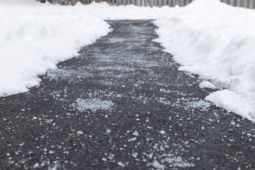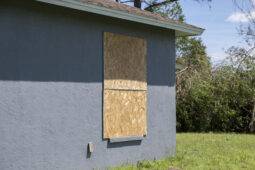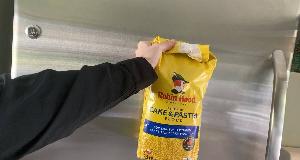ManMade Essential Toolbox: Why Every Person Should Own a Speed Square
In this edition of the ManMade Essential Toolbox, we're looking at the speed square, a simple carpentry tool that does more that you might think.

I love a tool whose common name indicates its purpose. Oh, what's a screwdriver do? A citrus squeezer? How about a box cutter? The function is all right there in the name.
In many ways, a speed square falls right into the category. It tells helps you determine “square” – that is, when one edge or line is exactly 90° to another – and it helps you do it quickly. Done. Right? Wrong.

Well, actually, yes, but, wait! There's more.
A speed square is a carpenter's tool, not a fine woodworking tool. It's intended for quick and reliable marking of butt and miter joint lines, rather than precision layout of parts for furniture. And, in this case, that's a good thing: cause, combined with a tape measure, this will help you break down dimensional or “two-by” lumber in no time. When using a marking knife, I'll reach for a try or combination square; but anytime I'm using a pencil, the speed square is the way to go.
Uses for a speed square
Since it's a solid piece of metal with no joints or moving parts, a speed square can be used as a try square and a miter square, or, a simple way of marking 90° and 45°, due to the long fence that runs along one side. It protrudes on either side, allowing the square to be flipped and used on any edge.

One of my favorite uses for the speed square is to scribe long lines parallel to the edge of a piece of plywood or solid wood, as for a rip cut. There are notches spaced every 1/4″ on the inside of the square, allowing you to place a pencil in the notch, butt the fence firmly against and edge, and scribe a long straight line along the grain.

When making crosscuts along shorter widths of stock, a speed square makes a great fence with which to guide a hand held circular saw. Just use the square to mark the cut line, and then a guide line the same distance of the blade to the shoe plate's edge. If making a rip cut, use the scribing technique above.
The speed square includes common angles for roofs, stairways, and decks, noted by the Hip – Val (hip and valley rafters) scale. That can take some practice to learn, and specific jobs to use. But along the hypotenuse edge lies a relatively accurate – and super fast – protractor: a way to read and mark angles.
It works like this. Find the pivot edge (the right angle) and hold it up to one side. On the opposite edge, find your angle, and align it to the same edge. The long side of the triangle – the hypotenuse – now crosses your project at your desired angle.
So, as an example, let's say you want to scribe a 20° line across the face of the stock. Do this:

Just make sure the pivot point is butted firmly against the edge once you've made your rotation. There. 20° line. Two seconds.
What's the best speed square to buy?
The speed square's “rough and tumble” build quality is a strength, and key to its usefulness on a variety of projects. It's cast aluminum, not finely machined, which means you won't think twice about throwing it in a toolbox, taking it to a buddy's house, or using on a ladder above hard concrete, because there's no way for it to go out of whack. If you drop it, it'll still be a-okay.
Oh, and they cost less than ten bucks. With that price, you might as well get two. Just make sure to keep the little blue book to reference in case you want to learn more about the Hip-Val scale.









